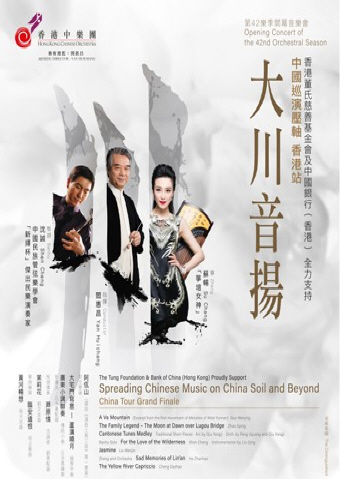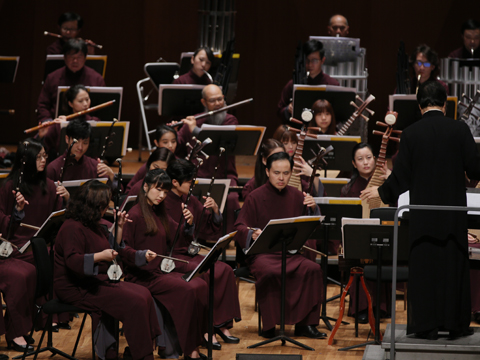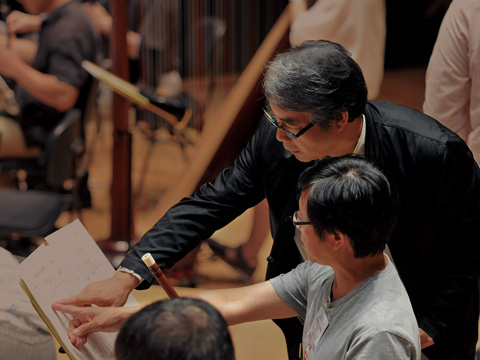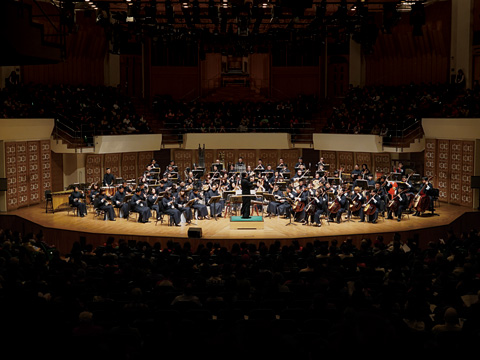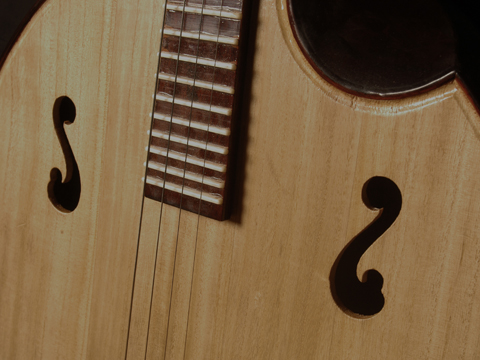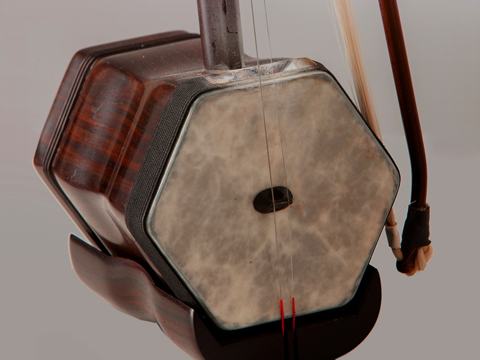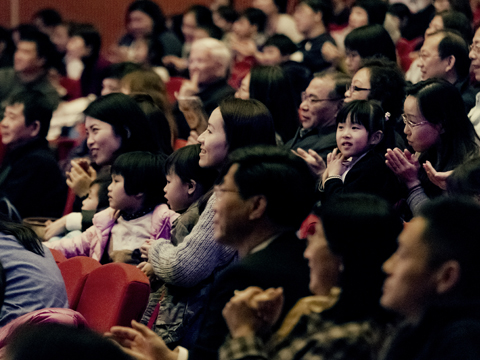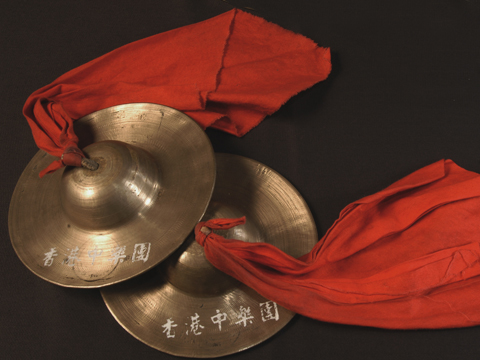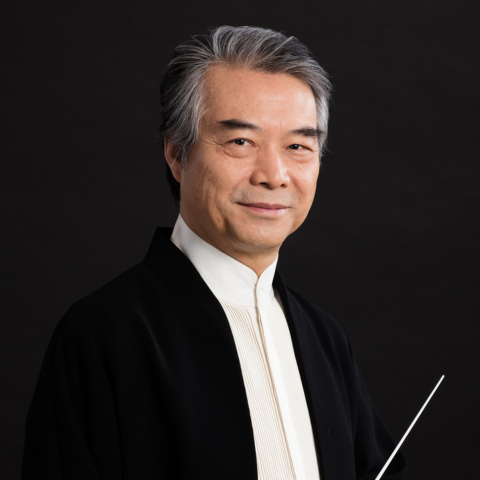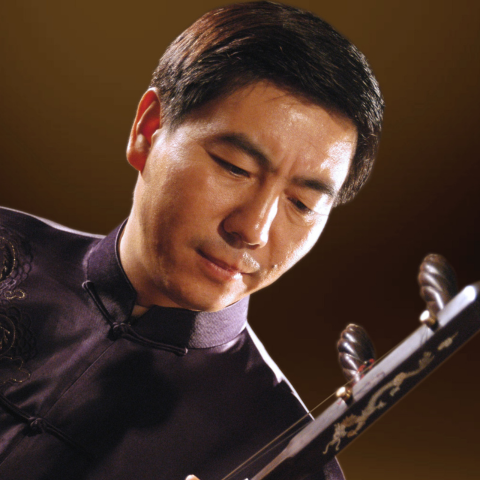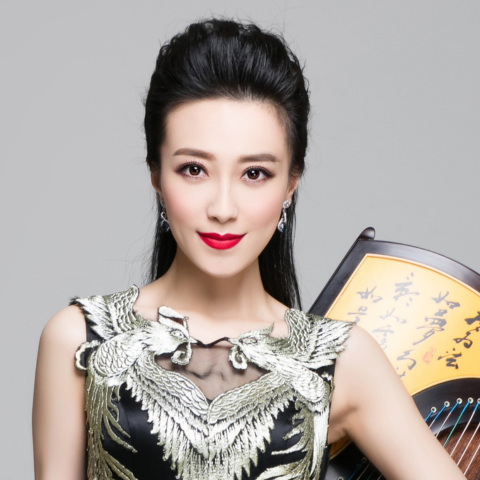Spreading Chinese Music on China Soil and Beyond – A Grand Feat
Chow Fan-fu
The Hong Kong Chinese Orchestra’s season opening concert, ‘Spreading Chinese Music on China Soil and Beyond’, has a programme made up of seven pieces, an interesting reminder of the Chinese jigsaw puzzle, the tangram. The Chinese title uses the imagery of a ‘long river’, which can be none other than the one in The Yellow River Capriccio. But it can also symbolize the bounteous land of China irrigated by the many rivers running through it, from north to south and east to west. As the theme points out, the concert aims not only to guide the audience with music, but also to display the richness and variety of musical genres in China.
Showing the colours of the north and the south
The four items in the first half of the concert demonstrate the distinctly different regional cultures of China. A Va Mountain, the first movement from Three Melodies of West Yunnan by Guo Wenjing, illustrates the indigenous colours and cultural heritage of Yunnan in China’s southwest. Immediately after that is a totally different China displayed: The Family Legend – The Moon at Dawn over Lugou Bridge by Zhao Jiping resonates with sounds of the capital city in the north that have come down from worlds bygone.
Then comes another distinctive pairing: Cantonese Tunes Medley which contains new orchestration using the ‘taut string’ ensemble set-up, creating a vivacious, airy and dynamic timbre, while For the Love of the Wilderness rolls out the earthy, rustic and sweeping grassland of the Great Northwest, described with the composer’s deep love. The juxtaposition offers a sharp contrast between the cultures of the north and the south.
Feeling three different kinds of emotional responses
The second half of the programme presents works by three composers coming from different backgrounds and different regions of China. Because of this, the pieces may evoke three different emotional responses. The first is Jasmine by Liu Wenjin. This title is shared by folk songs in the Jiangnan (‘south of the Yangtze’) region in Zhejiang, in northern China, and in northeastern China. Liu’s version is a tuneful piece of music with high lyricism that fills the listener’s heart with contentment and happiness. Sad Memories of Lin’an by He Zhanhao is written for zheng and orchestra. Although the background is the ancient, scenic city of Hangzhou (known as ‘Lin’an’ in the Song Dynasty), the story tells of the tragic life of General Yue Fei, who, despite his patriotic heart, was framed and died unmitigated. The music therefore is far from bestowing peace, but makes the listener feel the rage and the sorrow. The concert ends with The Yellow River Capriccio by Cheng Dazhao. Since the Yellow River is considered a symbol of the Chinese race, having brought life to the land and its people, it is also a rich source of inspiration and imagination for many. The mood is therefore one of open-hearted, all-embracing love, bustling with energy and optimism.
The seven pieces of music on the concert programme delineate the varied geographical splendours of China, their backgrounds, humanistic touches and indigenous characters. While each is distinctly unique, they form an enormous patchwork of China’s soil cut up by the rivers. If viewed as elements that make up the programme of this concert, they can of course be reshuffled like the tangram, but each placement would yield a totally different ambience. Now following the ingeniously laid out programming, we start with the exotic southwest, then glide over the broad expanse of time and space in different directions - still within the China context - until we finally come to the river that gives birth to its civilization and culture. The macrocosmic perspective allows the audience to feel the magnitude of a music culture that is absolutely stunning by sheer diversity and magnificence. So, shall we begin this wondrous journey now?
